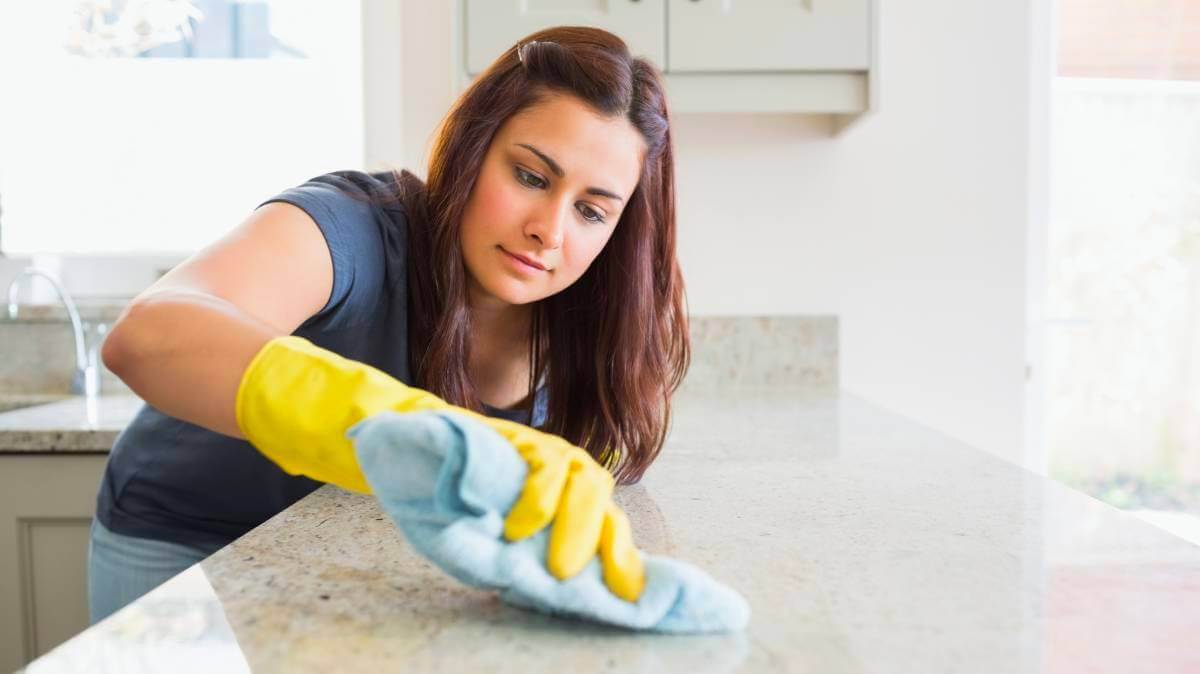When it comes to kitchens, simply looking clean isn’t enough. It’s the germs and bacteria you can’t see that pose the biggest threat to your health and hygiene.
Some of the dirtiest things you’ll find in your home are the micro-organisms found in your kitchen. This includes bacteria such as salmonella, listeria, E. coli and campylobacter that grow in meat and dairy.
These are the kitchen cleaning mistakes you’re probably making, and the simple ways you can fix them.
The quick wipe down
Unfortunately, a quick wipe with a cloth may make your kitchen bench and sink look cleaner but doesn’t do much to fight bacteria. A type of bacteria called listeria can survive on your bench and sink for up to six days and is particularly hard to kill because it makes a film across the surface of your bench. Dr Meghan May, associate professor of microbiology and infectious diseases at the University of New England College of Osteopathic Medicine, told SELF: “The absolute grossest place in the kitchen is the sink.”
To ensure your bench and sink are properly cleaned, you’ll first need to clean them with hot soapy water. This removes the grime and dirt that you can see with your eyes. Then, spray sanitiser over the surfaces and let it sit. The label on the bottle of sanitiser will indicate how long it needs to sit in order to kill germs and bacteria. Afterwards, wipe your bench down with water.
Not cleaning reusable bags
When we visit the shops now, we’re hyper careful to sanitise our hands on the way in and out. Some people are also following health and safety recommendations and sanitising the packaging of the food they bring home. While these are great steps to keep yourself and your family healthy, few of us consider the germs and bacteria we bring inside our homes in our reusable green bags. Put your reusable bags into the washing machine with a touch of disinfectant. They can be hung up or put in the drier to dry.
You don’t clean your cleaning tools
The cleaning sponges and dishcloths in your kitchen are ranked the third grossest item in your home, and are known to harbour up to 362 types of bacteria. This may make you think differently about giving your kitchen bench a quick wipe down. Luckily, they’re easy to clean. You can wash dishcloths in your washing machine with a dash of disinfectant in a hot load. Put your sponge in the microwave for one minute every few days or wash it in your dishwasher on a drying cycle. Don’t keep sponges for more than two weeks.
Don’t wait to wash your pots and pans
As tempting as it may be to plunge a hot pan under a stream of water, washing hot pots and pans with soapy water can actually warp them, explains Eating Well. It’s best to let your pots and pans cool down before cleaning them. If you don’t, they can bend, meaning they won’t sit properly on your stovetop and may cook unevenly. Eating first and washing later is the best rule when it comes to your pots and pans.
How often do you thoroughly clean your kitchen? Will you think about your sink and sponge differently from now on? Share your tips in the comments section below.
Also read: Is it ever okay not to clean your barbecue?


Once again, the germ phobic people are on their soapbox. This is the main reason there is so much sickness around these days.